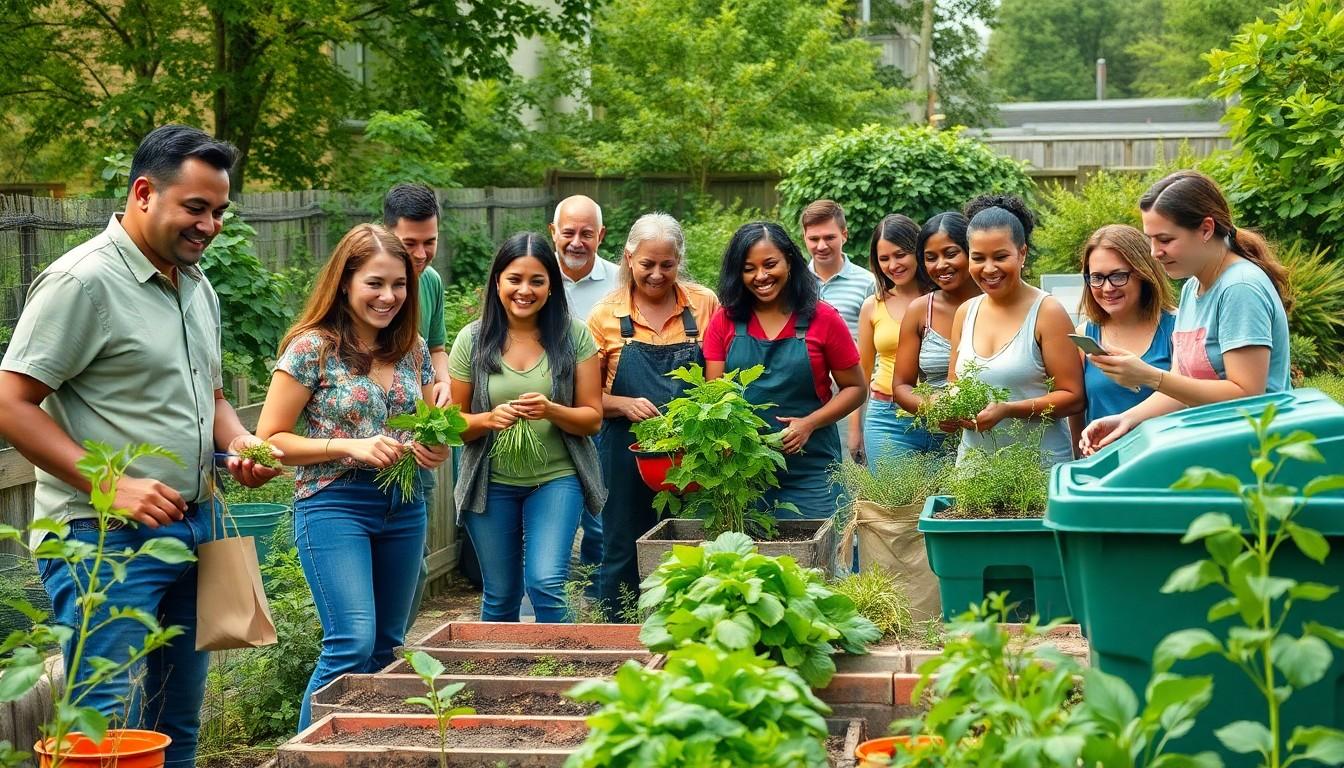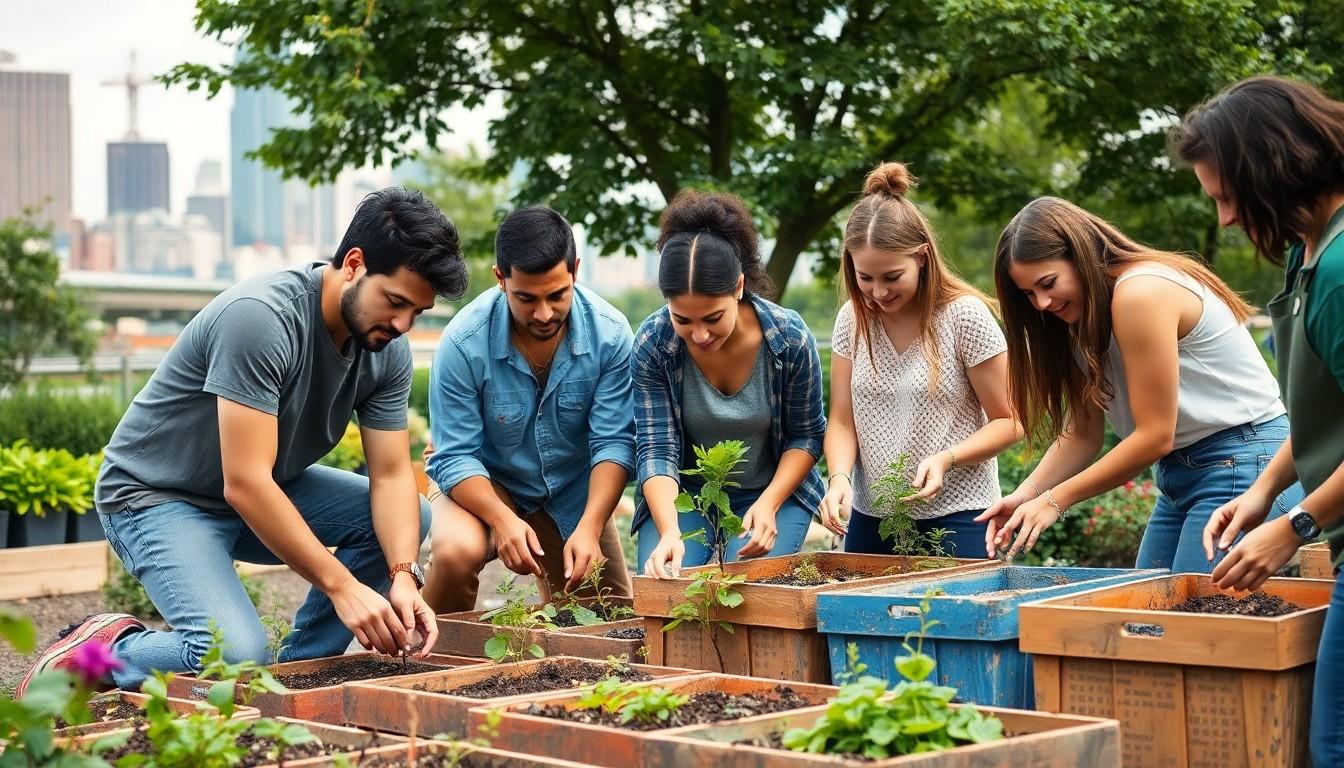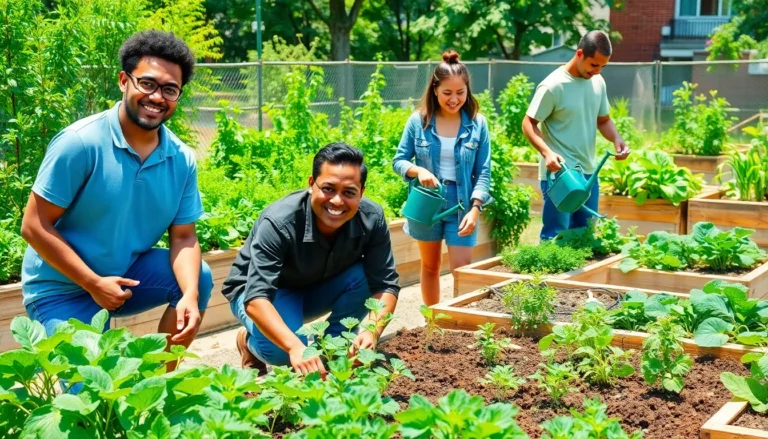In a world where climate change is the new buzzword and reusable bags are the latest fashion statement, one has to wonder: are Americans really living a sustainable lifestyle or just pretending to be eco-friendly on Instagram? With the average American producing about 4.4 pounds of trash daily, it seems like a mixed bag of intentions.
are americans living a sustainable lifestyle
Sustainability in America presents a mixed picture. According to the Environmental Protection Agency, Americans generated about 292.4 million tons of trash in 2018, reflecting a significant challenge. Many individuals express concern for the environment but struggle to implement meaningful changes in their daily lives.
Efforts toward sustainable living often include initiatives like recycling and reducing food waste. The recycling rate stood at approximately 35% in 2018, highlighting room for improvement. Awareness campaigns frequently emphasize the importance of sustainable practices, yet participation rates may not meet expectations.
In urban areas, public transportation offers greener alternatives to driving alone. Cities encourage shifts to biking and walking, but acceptance varies across regions. Communities increasingly invest in green spaces and community gardens, fostering local food production. Availability of organic options grows, making it easier for consumers to choose sustainable products.
Corporate responsibility also plays a vital role. Over 80% of Americans feel that companies should prioritize sustainability in their operations. Retailers adopt eco-friendly packaging and source materials responsibly, responding to consumer demand for transparency.
Behavioral changes, such as reducing energy consumption, remain essential. According to the U.S. Department of Energy, residential energy use accounts for about 21% of greenhouse gas emissions in the U.S. Households can significantly impact sustainability by turning off lights or using energy-efficient appliances.
Sustainable living options are expanding, yet challenges persist. Monitoring waste levels and emphasizing education can drive progress. Engaging local communities in sustainability discussions fosters collective efforts toward a greener future.
Key Factors Influencing Sustainable Living

Environmental awareness plays a crucial role in sustainable living. Many Americans recognize the impact of their choices on the planet. Surveys indicate that 70% of individuals express concern about climate change and its effects. Educational campaigns promote eco-friendly practices, yet actual behavioral changes lag. Knowledge gaps often hinder the adoption of sustainable practices at home or in communities.
Economic considerations significantly affect sustainability efforts. People weigh the costs of eco-friendly products against their traditional alternatives. A report showed that 54% of consumers consider price before making sustainable choices. Economic incentives, like tax credits or rebates, encourage higher investments in renewable energy or energy-efficient appliances. Affordability remains a barrier for many, preventing widespread adoption of sustainable options.
Social influences shape perceptions around sustainability. Group behavior often drives individual actions in community settings. Peer pressure can inspire people to adopt greener lifestyles. Around 60% of consumers depend on social media for sustainability-related information. As individuals share eco-friendly practices online, others may feel motivated to follow suit. Social networks play an essential role in fostering a culture of sustainability.
Current Trends in Sustainable Practices
Sustainable practices in the U.S. continue to evolve in response to environmental challenges and consumer demand.
Renewable Energy Adoption
Solar and wind energy are gaining traction as viable sources of power. In fact, renewable energy accounted for nearly 20% of U.S. electricity generation in 2019. Many homeowners are installing solar panels, driven by incentives like tax credits. Families and businesses alike are recognizing the long-term cost savings associated with renewable energy. As these sources become more affordable, adoption rates have increased sharply. Public awareness campaigns and advancements in technology also contribute to this trend, reflecting a growing commitment to reducing carbon footprints.
Waste Reduction Efforts
Waste reduction remains a critical focus for many Americans. A notable rise in composting initiatives is evident, with cities implementing programs to minimize organic waste. About 75% of the trash produced by Americans could be composted or recycled, yet recycling rates stand only at approximately 35%. Communities are promoting “zero waste” campaigns that encourage residents to rethink consumption habits. Businesses are also adopting sustainable packaging practices, responding to consumer demand for less plastic waste. Local food movements are thriving, as individuals seek to support sustainable agriculture while reducing transport-related emissions.
Challenges to Sustainable Living
Sustainable living faces several obstacles that hinder progress across the U.S. Understanding these challenges provides insight into the complexities of individual and collective efforts toward an eco-friendly lifestyle.

Urban vs. Rural Differences
Urban and rural areas exhibit distinct approaches to sustainable living. Cities often emphasize public transportation, biking, and pedestrian-friendly infrastructure, making green initiatives more accessible. Conversely, rural communities may rely heavily on personal vehicles, which raises transportation emissions. Urban residents show a greater affinity for recycling programs, reflected in their higher participation rates compared to rural counterparts. Rural areas, while often more resource-efficient in land use, face challenges in access to local markets that promote sustainable agriculture. These differences highlight the need for tailored strategies that address specific regional contexts to foster sustainability.
Policy and Economic Barriers
Policy and economic factors significantly hinder sustainable practices. In 2018, approximately 54% of consumers cited price as a primary consideration when making sustainable choices. Many affordable sustainable options remain limited, deterring widespread adoption of eco-friendly habits. Policies promoting renewable energy distribution face resistance, especially where traditional energy sources dominate.
Communities that lack financial incentives for green infrastructure development struggle to implement changes. Businesses, while responding to consumer demand for sustainability, often encounter costs associated with transitioning to environmentally-friendly practices. Without supportive policies and economic frameworks, achieving meaningful progress in sustainable living remains challenging.




